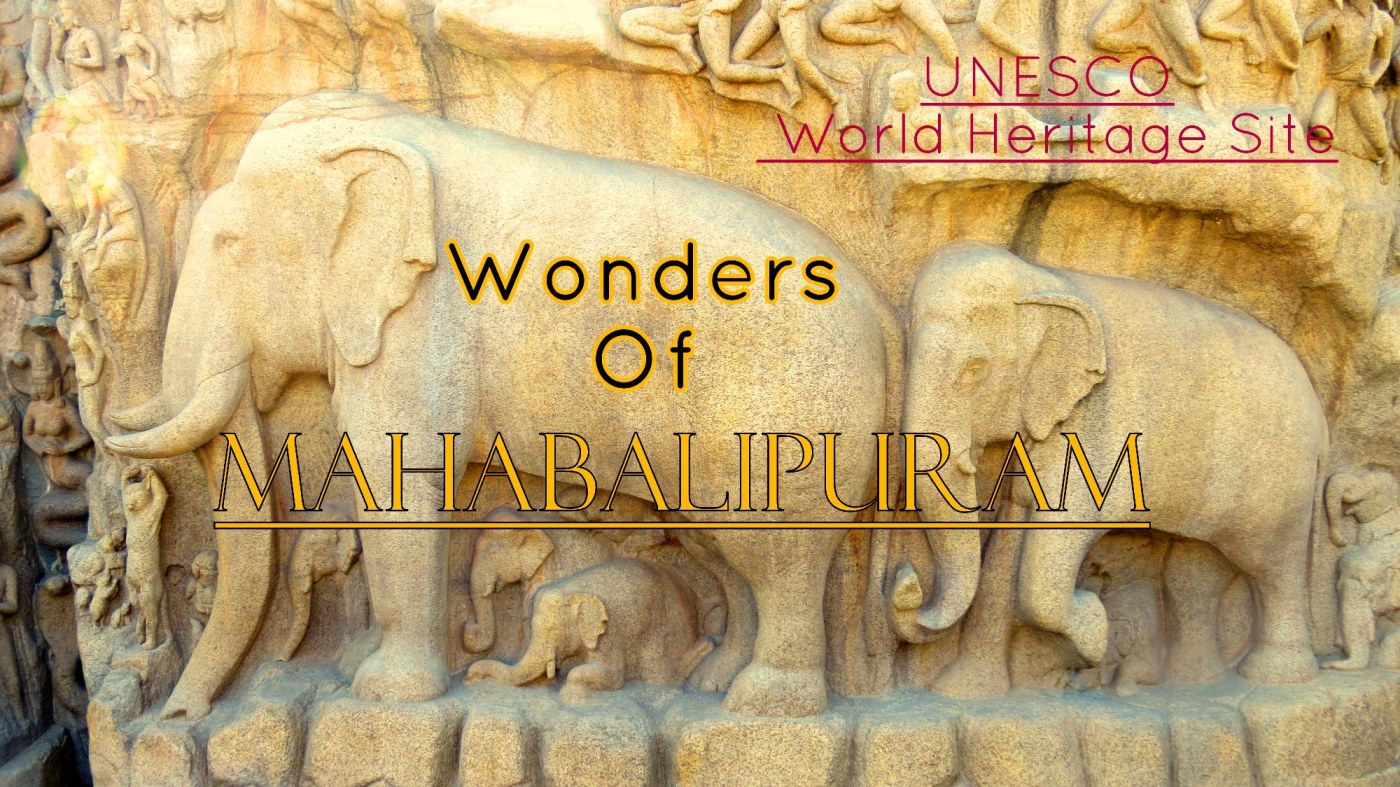MONUMENTS OF 'MAHABALIPURAM'
- The 7th century erstwhile port city is famous for its rock-cut shore temples. Monolithic rock carved temples are refreshingly uncluttered, unlike later grandiose Dravidian architecture and tower over the waves behind a protective breakwater.
- Mahabalipuram is known for its monolithic rock structures - monuments and temples - each carved out of one rock.
- Krishna's Butter Ball, Arjuna’s Penance, Optical illusion, Mahishasurmardini Cave temple, Adhivarha Cave Temple, Tiger’s Cave, Pancha Ratha, Light House, Bhima's Kitachen, Tsunami Temple and the Shore temple are some of the famous monuments that should not be missed.
1300 Year Old Ancient Monuments Of Mahabalipuram (Mamallapuram) in Tamil Nadu, India

Mahabalipuram is known for its monolithic rock structures - monuments and temples - each carved out of one rock! Legend is that artisans would sit on top of a rock and carve out a temple from top to bottom unlike the conventional practice where the top is built at the end. Arjuna’s Penance, Mahishasurmardini Cave temple, Adhivarha Cave Temple, Tiger’s Cave, Pancha Ratha and the Shore temple are some of the famous monuments that should not be missed. Every one of these comes with an awe-inspiring tale that adds to the experience of being there.
However, the Shore temple stands out with its brilliant Pallava architecture and masterful carvings, although most of it has gradually eroded away.
With its historical monuments, architectural stories, mysterious caves, Mahabalipuram does full justice to its UNESCO World Heritage site title courtesy the magnificent line of ancient stone carvings that both impress and intrigue.
Discover The True Beauty Of Ancient Monuments of Mahabalipuram in this video:
Source : FunAlive TV
The 7th century erstwhile port city is famous for its rock-cut shore temples. Monolithic rock carved temples are refreshingly uncluttered, unlike later grandiose Dravidian architecture and tower over the waves behind a protective breakwater.
A lone lighthouse on a hill watches over a group of temples below.
Group of Monuments Mamallapuram (Mahabalipuram), Tamil Nadu.
Descent of the Ganges - Arjuna's Penance at Mahabalipuram
Source : FunAlive TV
Arjuna's Penance - This 1300 year old ancient Indian sculpture at Mahabalipuram Shows Shape shifting Reptilians & Ancient Astronauts.
Rayar Gopuram at Mahabalipuram
Mysterious Krishna's Butter Ball
Weird But True:
The mystery of the balancing rock of Mahabalipuram.
The Krishna’s Butter Ball or Vaanirai Kal (Stone of the Sky God), as it is known to locals, has been sitting on a 45-degree slope in Mahabalipuram for over 1,400 years.
Some believe that it was put in place by the gods, others by aliens - and geologists argue it's a natural formation.
The actual name of the stone is Vaan Irai Kal, which translates to Sky God's Stone, and according to one source, the more playful name was given to the rock by a local tour guide.
The push attempt:
According to an ancient myth, the Pallava King Narasimhavarman who ruled South India from 630-668 C.E. tried to remove the rock.
He gave specific order that the rock which was considered to be from the heavens must never be touched.
However, a frustrated Narasimhavarman was forced to watch that his orders could not be carried out. Despite all efforts, the rock simply did not move.
In 1908 the then Governor of Madras Arthur Lawley decided the boulder to be too dangerous to nearby homes and wanted it removed. Seven elephants were employed to push the rock. But to everyone’s surprise the rock couldn’t be moved and the task was abandoned.
The 20ft rock appears to defy gravity, looking like it's going to roll at any moment - and all attempts to move it have been in vain.
This is one of those unexplained mysteries in science. At Mahabalipuram the 20 feet high and 5 meter wide rock estimated to weigh over 250 tons seems to pull off a balancing act like no other. Known locally as Krishna’s Butter Ball is not a rock that stands on an extremely small and slippery area of a hill. It’s hard not to wonder how such a big structure is stationary at a place where it’s impossible to be so. And it’s been there for over 1400 years. Yes you heard that right 1400 years seemingly defying the laws of physics.
Its original Tamil name is "Vaanirai Kal" which literally translates to "Stone of The Sky God".
Possible Theories:
The rock is believed to be naturally formed but theorists believe a natural formation such as this is highly improbable, as natural corrosion could not have brought upon such a shape.
Fact: This rock is bigger and heavier than the monolithic stones of Ollantaytambo, Peru or Machu Picchu.
The science:
The rock is balanced upon a 4 feet area of the hill. Its simple physics that a structure needs a 250 ton rock has a far-fetched chance of resting on a 4 feet area for such a long period. To site imagery, imagine a ball on a slope, unless it has a heavy footing it rolls down pretty fast.


